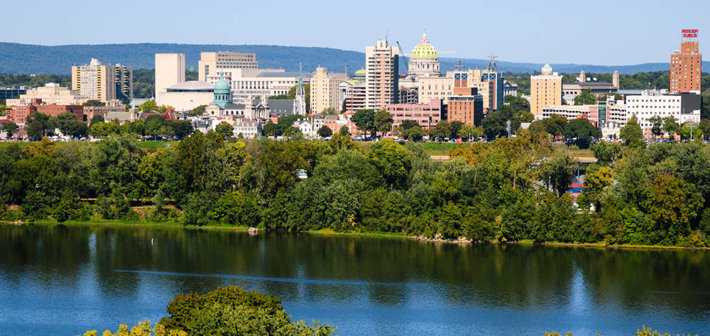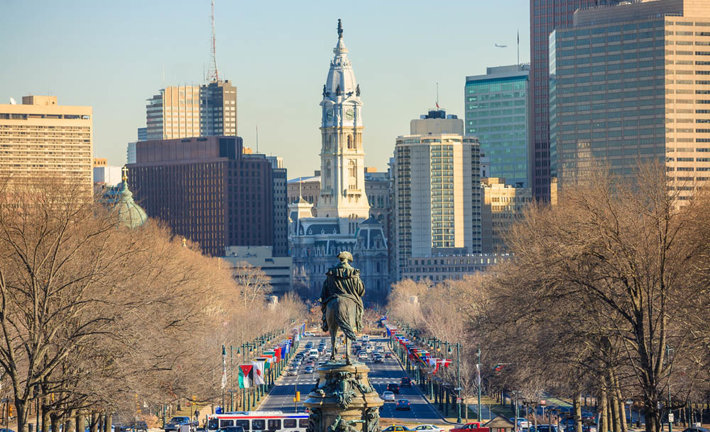Pennsylvania Drug Addiction

Like most East Coast states, Pennsylvania has struggled with heroin, cocaine and marijuana trafficking, consumption and addiction for years. New patterns of drug use present new threats to Pennsylvanians. Increased seizures of methamphetamine and increasing prescription drug use are evidence of new channels of drug trafficking and distribution that are inevitably followed by more citizens trapped in addiction.
In most parts of Pennsylvania, cocaine or crack cocaine constitute the main reason addicts seek rehabilitation treatment. But now, Central Pennsylvania is seeing more people seeking addiction treatment help for heroin addiction. One reason for increasing heroin addiction numbers is the migration of heroin dealers out of the big cities. Smaller cities, town and even rural areas have become targets. These areas are thought to have less law enforcement power to detect and crack down on drug trafficking and dealing plus they offer fresh customers for the drugs. Families that moved out of the inner cities to get away from the drug problems may find that the problem has followed them to the suburbs or even rural areas. And the average age of those who become addicted to heroin drops as the problem migrates.
Gangs Responsible for Much of the Retail Drug Trade
Gangs are increasingly involved in the street-level distribution of all the main drugs. One of the gangs, the Bloods, has expanded its gang recruitment into suburban and rural public and private schools as they expand into these new markets. Recruitment even takes place in prisons, where inmates are promised protection on the inside in exchange for loyalty and help with the drug distribution business when the inmate is released. These changing forces are responsible for an increase in violent drug-related crime in Southern Pennsylvania and Northern New Jersey.
When drug distribution patterns change and new territories are penetrated by a group wishing to take over distribution, the resulting violence is intended either to intimidate or to eliminate competition.

Drug-Trafficking Ethnic Groups Utilize Urban Environment and Abundant Infrastructure
Philadelphia has one of the largest ethnic populations in the United States. This allows Jamaican, Hispanic and Asian drug trafficking organizations (DTOs) to mingle without standing out in any way. Mexican DTOs, far from home in Pennsylvania, are increasing their presence and strength in this market. The establishment of Atlanta as a major transshipment point for Mexican DTOs on the East Coast supports their presence in the Mid-Atlantic states.
As in many other states, Asian DTOs (particularly Vietnamese) are expanding their indoor marijuana grow operations in Pennsylvania. Expensive homes in the suburbs are gutted, the windows are covered, the electrical grid is bypassed to conceal the high consumption of electricity and extensive hydroponic systems are installed. Hydroponic systems permit several harvests per year, making indoor grows increasingly desirable.
The ample Philadelphia transportation infrastructure is used to get drugs into the area, using interstates (private vehicles and trucks), package delivery services, airlines, rail and postal service. The main channel for north-south trafficking has traditionally been I-95, passing directly through Philadelphia. A new pattern is the use of smaller, back roads to get drugs into and out of distribution centers in Pennsylvania, avoiding the law enforcement presence and surveillance of the major interstates. After being repackaged for local sale, drugs are distributed to Allentown, Bethlehem, Harrisburg, Pittsburgh, Reading, and Easton.
The Human Toll
In years past, cocaine has been the primary drug responsible for the need for addiction treatment. The last few years, more people have needed treatment for addiction to heroin, methamphetamine and prescription drugs. Vicodin, oxycodone, fentanyl, pseudoephedrine and various drugs of the benzodiazepine class are increasingly responsible for arrests, addiction, and deaths.
Here are some of the statistics in brief:
- In 2007, more than 20,000 people were arrested for drug possession or trafficking
- Thirty-six percent of all arrestees in Philadelphia tested positive for cocaine, 15 percent tested positive for methadone, 12 percent were positive for opiates and 11 percent were positive for benzodiazepines
- Forty-two percent of all male Philadelphia high school students have used marijuana
- In 2006, cocaine was the most likely drug to be present in deaths, followed by alcohol, heroin/morphine, oxycodone, diphenhydramine (a sedative/antihistamine), methadone and codeine.
In a 2007 survey, 729,000 Pennsylvanians admitted to current drug use, and 207,000 said they used cocaine in the past year. More than two million said they were binge drinkers. More than a hundred thousand people start using marijuana every year.
Naturally, some of these people become addicted. In 2007, 803,000 admitted to being dependent on or abusing drugs or alcohol. Seventy-two thousand of these people were under 18 years of age. There’s simply not enough drug rehabilitation facilities for all these people. More than 200,000 of those who felt they needed help with drug addiction and rehabilitation did not get it. And more than 600,000 of those who felt they needed rehabilitation help with alcoholism didn’t get it.
Some people have tried drug or alcohol rehabilitation before and failed to stay drug-free afterward. The Narconon program not only addresses the debilitating effects of drug abuse on the mind and body but also resolves why a person turned to drugs in the first place. As a result, a person can graduate from the program into a new life free from drug use.
 ®
®